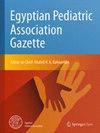评估不同血清生物标志物对中枢性性早熟女孩的诊断价值
IF 0.5
Q4 PEDIATRICS
引用次数: 0
摘要
令人担忧的趋势表明,疑似性早熟女孩的转诊人数在增加。然而,对性早熟的定义存在差异。GnRH 刺激试验是诊断性早熟的金标准试验,但其价格昂贵且难以解释。此外,静脉注射 GnRH 可能无法使用。因此,我们试图评估基础血清促黄体生成素和抗苗勒氏管激素对中枢性性早熟女孩的诊断性能,以此作为 GnRH 刺激试验的一种更简便的替代方法。这项研究针对 26 名年龄小于 8 岁、出现性早熟的埃及女孩。研究人员进行了多项评估,包括坦纳分期和促肾上腺皮质激素(GnRH)刺激试验。对基础血清黄体生成素、卵泡刺激素和抗穆勒氏管激素进行了分析,并绘制了 ROC 曲线。患者确诊时的平均年龄为 5 ± 2.8 岁。大多数患者的乳腺坦纳指数为 3(76.9%)。65.4%的患者骨龄较长。中枢性性早熟与对照组的基础黄体生成素水平存在显著差异(p < 0.001),曲线下面积为 0.840。0.29 IU/L 的临界值提供了 84.62% 的灵敏度和 76.92% 的特异性。作为中枢性性早熟的筛查工具和有价值的指标,基础促黄体生成素的效果优于卵泡刺激素和抗穆勒氏管激素,从而有可能减少 GnRH 刺激试验的必要性。本文章由计算机程序翻译,如有差异,请以英文原文为准。
Evaluation of the diagnostic value of different serum biomarkers in girls with central precocious puberty
Alarming trends show an increase in referrals of girls with suspected early puberty. However, variations in defining precocious puberty exist. GnRH stimulation test is the gold standard diagnostic test, which is expensive and challenging to interpret. Moreover, intravenous GnRH might not be available. Therefore, we sought to evaluate the diagnostic performance of basal serum Luteinizing Hormone and Anti-Mullerian hormone in girls with central precocious puberty, as an easier alternative to GnRH stimulation test. The study was conducted on 26 Egyptian girls presenting with early puberty at age < 8 years. Several evaluations including Tanner staging and GnRH stimulation test were performed. Basal serum luteinizing hormone, follicle stimulating hormone, and anti-Mullerian hormone were analyzed, and ROC curve was performed. The mean age of the patients at diagnosis was 5 ± 2.8 years. Most patients had breast Tanner 3 (76.9%). Bone age was advanced in 65.4% of patients. Basal luteinizing hormone level significantly differed between central precocious puberty and controls (p < 0.001), with an area under the curve of 0.840. A cut-off of 0.29 IU/L provided 84.62% sensitivity and 76.92% specificity. Basal luteinizing hormone out-performs follicle-stimulating hormone and anti-Mullerian hormone as a screening tool and valuable indicator of central precocious puberty, potentially reducing the necessity of GnRH stimulation test.
求助全文
通过发布文献求助,成功后即可免费获取论文全文。
去求助
来源期刊

Egyptian Pediatric Association Gazette
PEDIATRICS-
自引率
0.00%
发文量
32
审稿时长
9 weeks
期刊介绍:
The Gazette is the official journal of the Egyptian Pediatric Association. The main purpose of the Gazette is to provide a place for the publication of high-quality papers documenting recent advances and new developments in both pediatrics and pediatric surgery in clinical and experimental settings. An equally important purpose of the Gazette is to publish local and regional issues related to children and child care. The Gazette welcomes original papers, review articles, case reports and short communications as well as short technical reports. Papers submitted to the Gazette are peer-reviewed by a large review board. The Gazette also offers CME quizzes, credits for which can be claimed from either the EPA website or the EPA headquarters. Fields of interest: all aspects of pediatrics, pediatric surgery, child health and child care. The Gazette complies with the Uniform Requirements for Manuscripts submitted to biomedical journals as recommended by the International Committee of Medical Journal Editors (ICMJE).
 求助内容:
求助内容: 应助结果提醒方式:
应助结果提醒方式:


